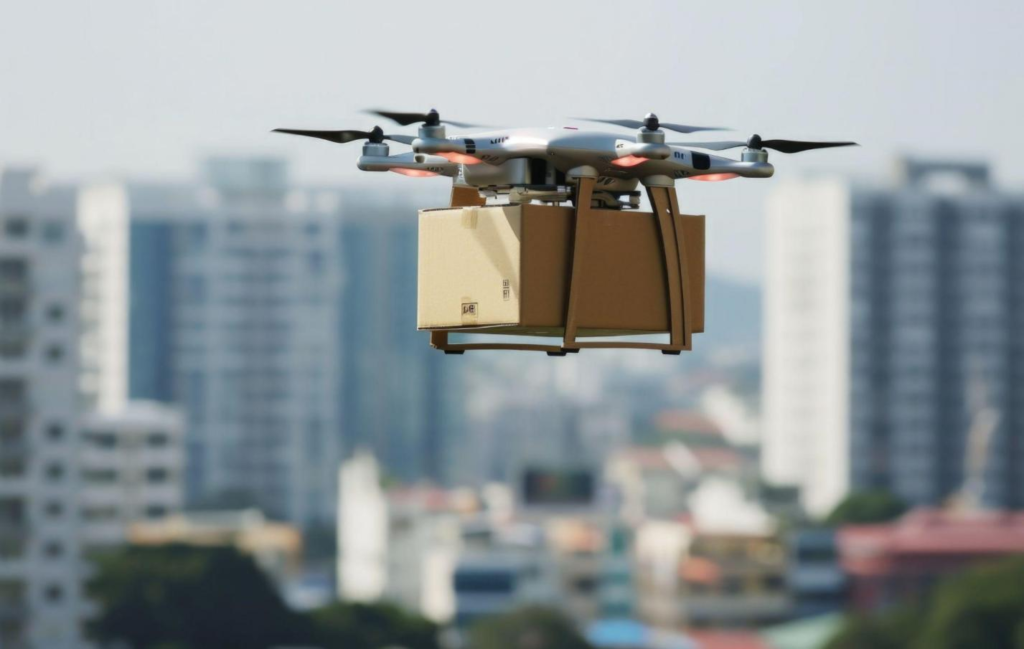Drones have come a long way from being toys flown for fun in parks. They’re increasingly seen as viable tools for commercial logistics in busy urban areas. This shift isn’t a hype; recent trials and pilot programs suggest that drone delivery could soon be a common sight in Australian cities. But what exactly is happening on the ground, and what does the future hold?

This article covers the current landscape, technological innovations, challenges, and what’s next for urban drone delivery in Australia.
- Brief Overview: From Hobby to Business
Once primarily recreational devices, drones are being tested and used for commercial delivery services. Companies like Wing by Alphabet have run successful trials, delivering everything from meals to medicines in selected areas. In Australia, trials are already underway, with companies working closely with regulators to carve out safe, effective pathways for drone use in cities.
- Current Landscape of Drone Delivery in Australia
The Australian Civil Aviation Safety Authority (CASA) has established a regulatory framework for commercial drone operations, including rules that drone operators must follow to obtain a CASA drone licence. This process ensures that drone flights are safe and compliant with national standards within densely populated areas.
Pilot programs have popped up in suburbs like Canberra and Logan. These programs focus on delivering small parcels, like medication, food, or other essentials, right to residents’ doorsteps. This is useful in remote or hard-to-reach areas, but urban centres are starting to see more regular operations too.
Types of goods delivered have expanded from basic necessities to more specialised items. Medical supplies and urgent medications are a common target for drone delivery. Food delivery is also on the rise, with some companies experimenting with autonomous small aircraft that can navigate busy city streets more efficiently than traditional couriers.
- Technological Advancements Making It Possible
Modern drones equipped with autonomous flight systems and AI-powered route mapping are critical. They can navigate complex cityscapes, avoid obstacles, and optimise delivery paths in real-time.
Drone designs have also improved. Increased payload capacity means fewer trips and more efficiency. Reducing noise levels makes drone flights less disruptive, a big plus for dense neighbourhoods. Integration with delivery apps, smart city infrastructure, and urban air mobility networks helps create seamless logistical ecosystems that connect drones with ground-based services.
- Challenges Facing Urban Drone Delivery
Regulation remains a significant barrier. Managing airspace, establishing no-fly zones, and preventing collisions require ongoing oversight. CASA’s rules, including the mandatory CASA drone licence, are designed to ensure safety, but they also add layers of complexity for operators.
Residents’ privacy, safety concerns, and noise complaints also complicate the picture. While many are excited about the convenience, some worry about intrusions or disturbances caused by buzzing drones overhead. Infrastructure is another issue; urban drone hubs need designated take-off and landing pads, secure storage, and maintenance facilities, which aren’t easy to establish in crowded cityscapes.
- What the Future Could Look Like
Expect to see drone delivery expand into more major metro areas like Sydney and Melbourne. These cities present larger markets and more opportunities for integration into daily life.
In emergencies, drones could become vital, providing rapid delivery of medical supplies, blood, or even assisting in disaster response. The idea of dedicated drone corridors, urban airways designated for uncrewed aircraft, might become a reality, streamlining the flow of multiple drones across city skies.
- Conclusion
Drone delivery is no longer only a speculative idea. It’s already beginning to reshape how goods move around the cities. As regulations adapt and technology matures, this mode of logistics will become more common, faster, and more integrated into daily life across Australia.
Interested in being part of this revolution? Check out Ace Aviation’s CASA-approved training programs and get your CASA drone licence. Whether you aim to build a career or only want to understand the industry better, getting qualified can open new doors in the skyward future of urban logistics.
